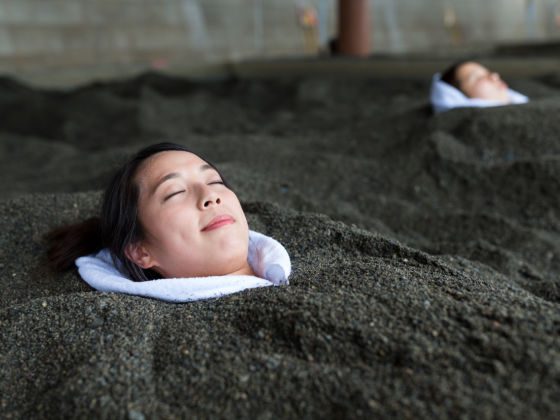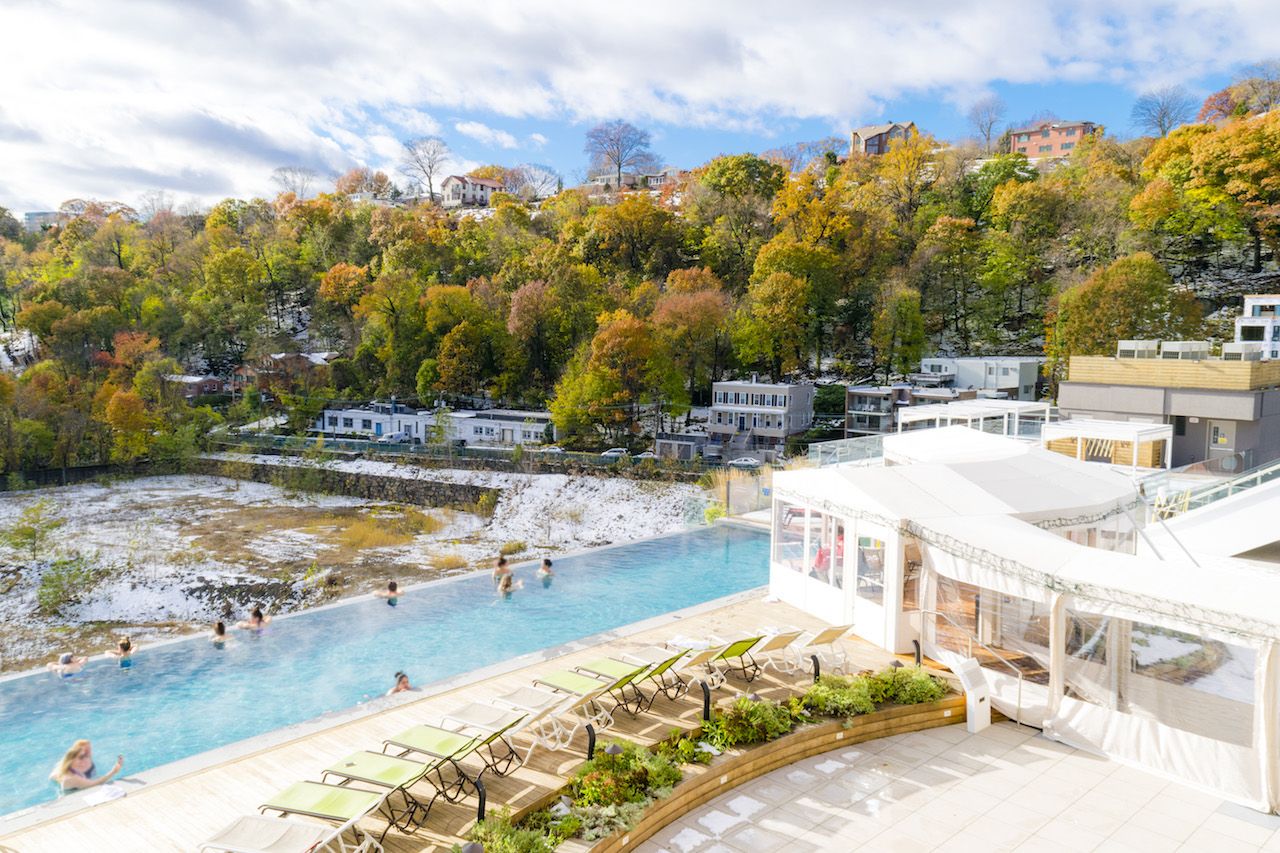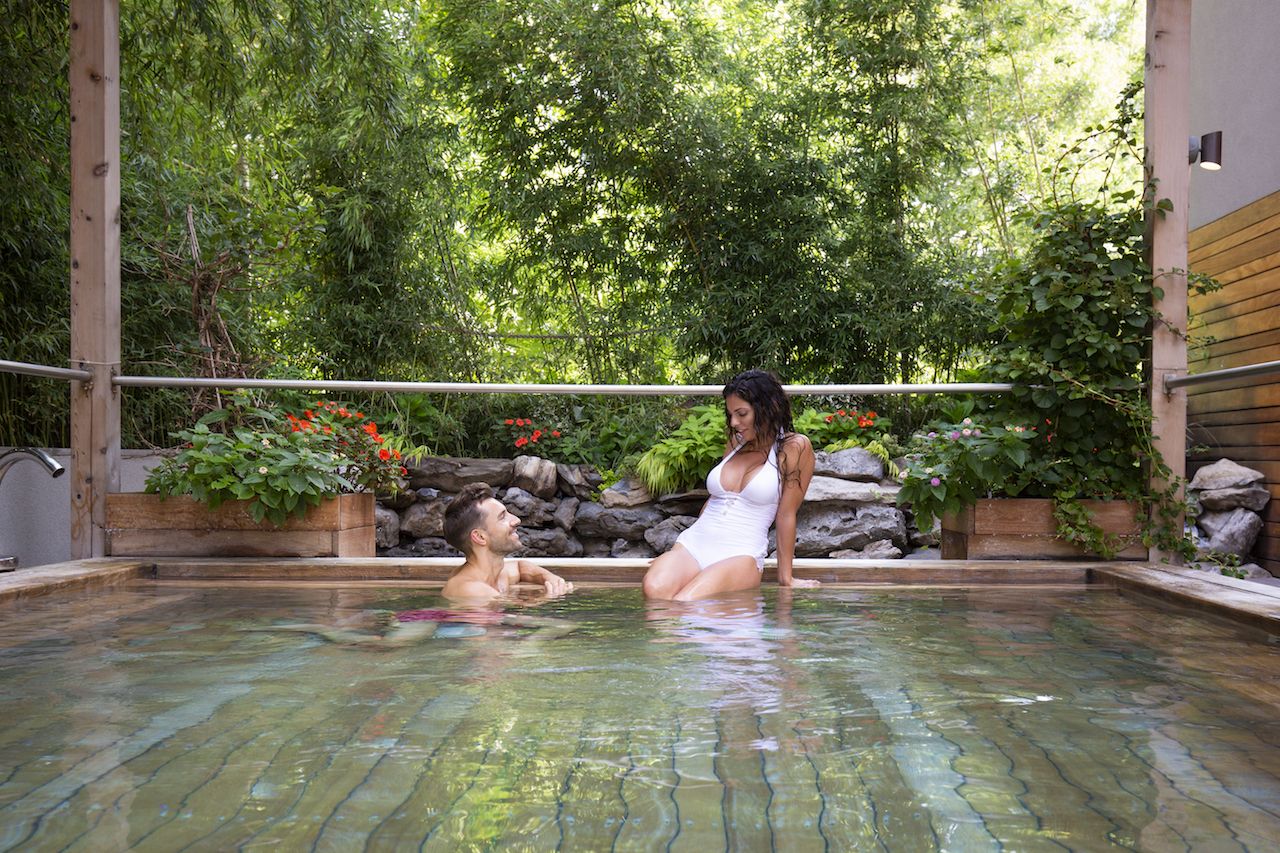Sand bathing is a centuries-old wellness practice that hails from the geothermal beaches of southern Japan. In recent years, this therapy has gained popularity for its ailment-relieving effects (improved circulation, joint pain relief, and reducing inflammation) and the extraordinarily unique experience of being buried in volcanic sand.
To experience an authentic Japanese sand bath, travelers need not flock to the shores of Ibusuki but instead to Edgewater, New Jersey, a quiet New York City-facing locale that hides the tri-state area’s best-kept wellness secret: SoJo Spa Club.
Editor’s Note: Please consult a doctor before partaking in spa treatments if you have pre-existing medical conditions.




